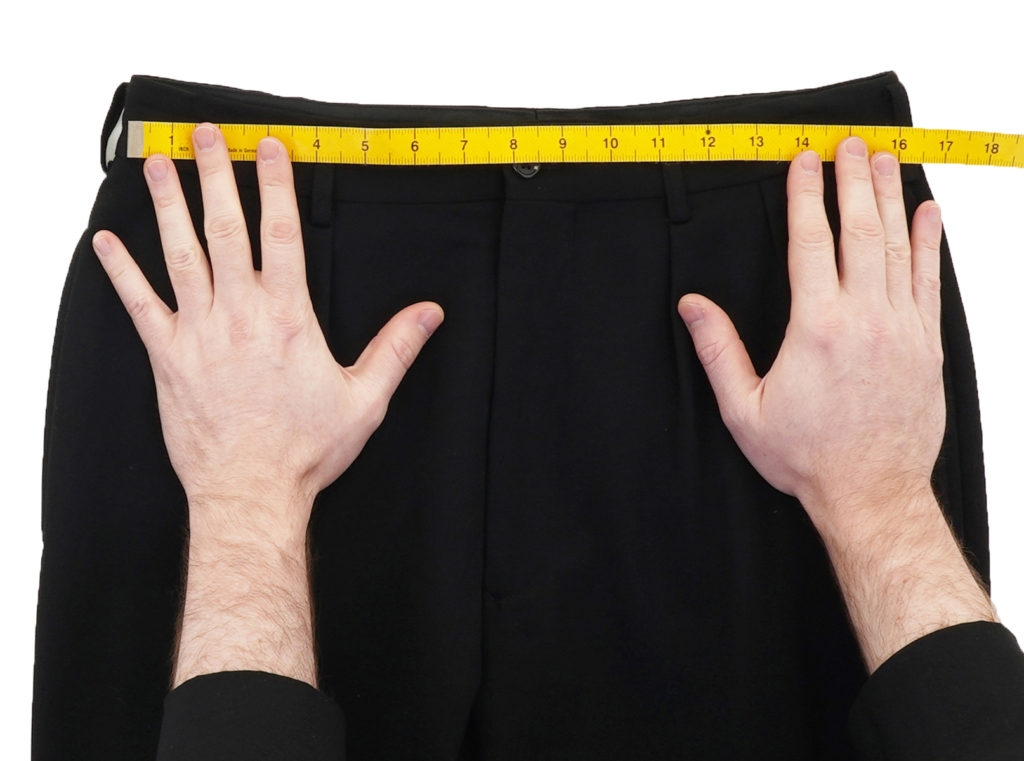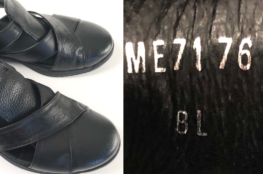
Buying clothes online can be a bit daunting. This is especially true when you’re shopping from Japan! We’ve written this guide to explain exactly how we measure garments at Nippon Couture.
Finding your ideal size
The best way to ensure clothing fits as desired is by comparing measurements to an item that you own, that you know fits well. We always measure clothing in inches, laid flat, seam-to-seam, and unstretched. Therefore, you should measure your own garments in the same way. Get your tape measure out, (soft-style is best), and make a note of your ideal garment’s dimensions.
To learn more about sizing and cuts for Japanese clothing, check out this guide.
How we measure tops
Sleeves measurements are taken from the shoulder seam, down the side of the arm, to the cuff.

Shoulders are measured from shoulder seam to shoulder seam, directly across, at the top of the garment.

Collar measurements are taken from the centre of the collar button to the beginning of the collar button hole.

Chest measurements are taken from pit-to-pit, straight across.

Standard chest sizing allows for a little extra room for movement. Therefore, classically a size 42 jacket will measure-up closer to 22 inches across when measured flat (exactly how much either way depends on the designer and intended cut). Please bear this in mind when considering chest sizing.
Length is measured down the back, from the seam underneath the collar, centrally, down to the rear hem.

How we measure bottoms
Waist measurements for trousers/pants are given as a flat measurement across, multiplied by two.

We always give information on additional fabric available for letting out. This is only ever an estimate, as it’s impossible to give an exact figure without unpicking the waistband and inspecting. If we’ve not indicated a figure for additional fabric, then you should assume that there’s no significant fabric available for extending.

Rise is measured from the centre of the waistband, down the front, to the crotch seam.

Inseam is measured from the crotch seam down to the hem.

As with waist measurements, we usually include information on additional fabric available for letting down. If we discover heavy pressing marks or such when we inspect the additional fabric at the hems we won’t include a figure for additional fabric, as we judge that these marks would make extension difficult or unsightly.
Leg opening is taken by measuring across the hem and multiplying by two to give the circumference.

Total length is measured from the hem to the waistband along the side of the garment.

Miscellaneous items
With all other types of item (hats, belts, bags, ties, and other accessories) we always try to offer a range of measurements to help you understand the various dimensions. This includes the weight of items. We hope that this information can help you judge how the garment might fit into your seasonal wardrobe.
If you ever need additional information about measurements for a specific garment, please get in touch. Currently, direct message via eBay is the best method. Likewise, should you require further clarification regarding our measuring methods, please feel welcome to message us.
Now that you’re armed with the information on how we measure our garments, there’s one more important issue to raise. Designers from the Japanese avante garde, such as Yohji Yamamoto, Comme des Garçons and Issey Miyake, have often explored and challenged notions of how clothes should be worn. Consequently, their garments don’t always conform to standard sizing. Many of these pieces are designed to be worn a little differently than your standard tailored item of clothing. For more information on this subject please read this guide: Japanese Designer Clothing Sizing and Cuts

